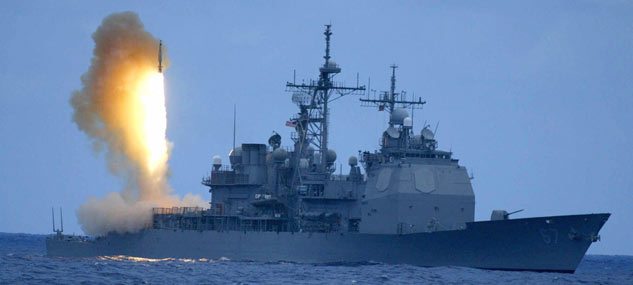The Missile Defense Agency (MDA) announced the award of three contracts to support concept definition and program planning for the Standard Missile 3 (SM-3) Block IIB program. The selected companies will work with MDA to define and assess viable and affordable missile configurations, conduct trade studies and develop an executable development plan. The contracts were procured through competition announced on the Federal Business Opportunities website. Four proposals were received.
In September 2009, the President announced a Phased Adaptive Approach (PAA) to developing and deploying missile defenses. The SM-3 Block IIB is key for the United States to advance missile defense with greater cost-effectiveness in Phase Four of the PAA by providing a highly-deployable interceptor missile that will destroy threat missiles early in their flight. This early intercept capability greatly reduces the burden on the current missile defense architecture which destroys threat missiles later in their flight.
Phase Four will be complete by 2020, and will provide an early intercept capability against medium, intermediate, and Intercontinental ballistic missiles. In concert with the Ground-based Midcourse Defense (GMD) capability now deployed in Alaska and California for homeland defense, the Phase Four PAA architecture with the high-velocity, land-based SM-3 Block IIB interceptor missile and enhanced command and control and sensor network will provide an effective defensive capability for both regional and homeland defense by allowing multiple interceptors opportunities to destroy threat missiles of all ranges in the region from which they were launched.
The three contracts include the following:
- Boeing Company, Chicago, Ill.
Current award value: $41.1 million
Work will be performed in Huntsville, Ala.
FY11 Research, Development, Test and Evaluations Funds of $1.410 million will be used to incrementally fund this effort through December, 2013 - Lockheed Martin Corporation, Bethesda, Md.
Current award value: $43.3 million
Work will be performed in Sunnyvale, Calif.
FY11 Research, Development, Test and Evaluations Funds of $1.410 million will be used to incrementally fund this effort through December, 2013 - Raytheon Company, Waltham, Mass.
Current award value: $42.7 million
Work will be performed in Tucson, Ariz.
FY11 Research, Development, Test and Evaluations Funds of $1.410 million will be used to incrementally fund this effort through December, 2013
The SM-3 Block IIB is a hit-to-kill interceptor using the force of a direct collision to destroy its target. It will be launched from the Aegis Ashore weapon system (a land-based version of the Navy’s Aegis Ballistic Missile Defense system). The ability to intercept earlier in flight — engaging targets in their ascent phase — enables defenders to handle larger raids (salvos) and engage target missiles before they can take evasive maneuvers or deploy countermeasures. With a higher burnout velocity, flexible launch locations, and greater interceptor divert (steering) capability, the SM-3 Block IIB can also address intercontinental ballistic missiles, supplementing the GMD capability.
Future variants of the SM-3 Block IIB will benefit from continuing research and development efforts of a solid propellant Divert and Attitude Control System (SDACS), as well as verification testing of lightweight structural designs to demonstrate the ability to produce and incorporate lightweight materials into the missile. MDA will also continue to develop digital models and simulations to support a comprehensive missile system capabilities regime.










